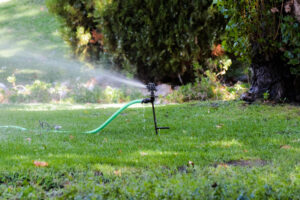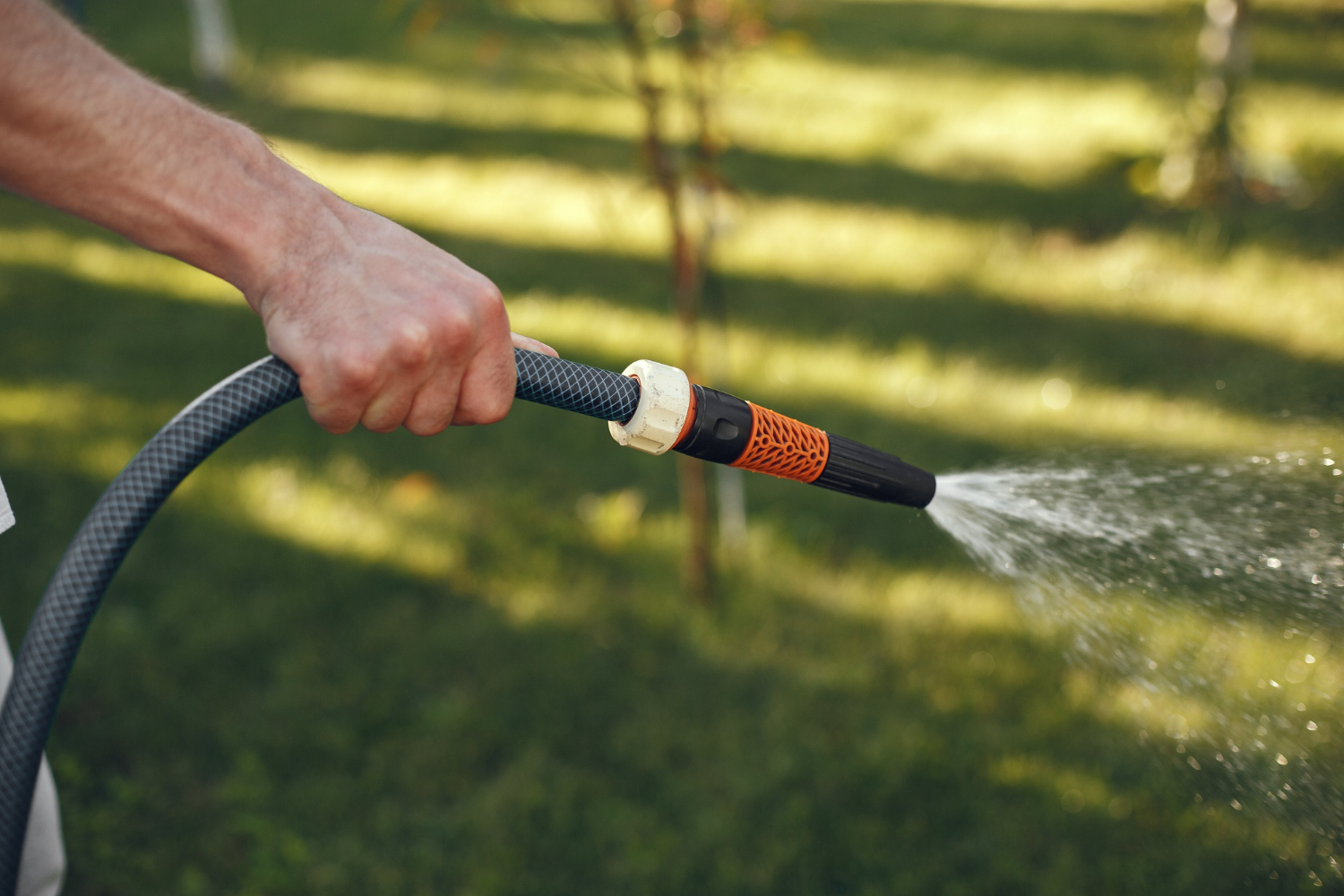If you’ve ever stood in your backyard wondering why one corner of the lawn looks like a lush green paradise while the rest looks like it’s been baking in the Outback sun, you’re not alone. I’m Jake, and after years of trial and error and a few very soggy afternoons, I finally cracked the code to a fuss-free, reliable lawn sprinkler setup. And let me tell you—it’s not as complicated as some people make it.
This guide’s for anyone who’s ever asked:
- “Do I need a sprinkler system?”
- “What type of sprinkler is right for my lawn?”
- “How often should I water the grass?”
- “Why does my neighbour’s lawn look like a golf course while mine’s patchy as an old flannel?”
Well, mate, settle in. We will cover all that and more without fancy lingo or dodgy shortcuts. Just practical advice that works, straight from someone who’s been there.
Why a Proper Lawn Sprinkler Setup Matters
Let’s be real. Watering your lawn with a hose after a long day at work sounds great… until you try to do it consistently. Then come the uneven patches, the forgotten corners, and the weekend guilt trips.
A good sprinkler setup:
- Saves you time – Set it and forget it (mostly).
- Saves water – No more overwatering or guessing.
- Keeps your lawn healthy year-round – Especially during those scorching summer months.
- Adds value to your home – Because, let’s face it, a tidy lawn turns heads.
Choosing the Right Lawn Sprinkler System
When I first looked into sprinkler systems, I was overwhelmed. Oscillating, rotary, drip lines, pop-ups—what the heck? Here’s what I’ve learnt, broken down in plain English:
- Pop-Up Sprinklers
These are great for most Aussie backyards. They sit flush with the soil and only pop up when in use. Perfect for:
- Medium to large lawns
- Clean, tidy look (no trip hazards)
- Even water coverage
Tip: Match the spray radius to your lawn shape to avoid watering your driveway.
- Drip Irrigation Systems
They are ideal for garden beds and smaller lawn sections. They deliver water straight to the roots, resulting in less evaporation and water waste.
- Good for dry climates
- Great for veggie patches or narrow areas
- Not ideal for wide-open grass lawns
- Rotary Sprinklers
These spin around and shoot water in a circular pattern. Best used for:
- Large lawns
- Areas with decent water pressure
- In situations where slow, deep watering is needed
- Stationary (Fixed) Sprinklers
They are simple, cheap, and easy. But they cover a small area and can lead to uneven watering. I recommend them if you have a tiny patch of grass.
 How to Plan Your Lawn Sprinkler Setup Like a Pro
How to Plan Your Lawn Sprinkler Setup Like a Pro
You don’t need to be a tradie to plan this out. Just follow these steps:
Step 1: Map Out Your Lawn
Draw a basic layout of your yard, including garden beds, paths, trees, and odd-shaped corners. Estimate the dimensions using a tape measure or pacing steps.
Step 2: Know Your Water Pressure
Grab a pressure gauge from Bunnings (they’re cheap). Most sprinklers need a minimum of 30 PSI (pounds per square inch) to work properly. Too low, and you’ll get a sad mist. Too high, and it’ll feel like a fire hose.
Step 3: Break It Into Zones
Trying to water your whole lawn at once can overload your system. Instead, divide your yard into “zones” and water them one at a time.
- Front lawn
- Backyard
- Garden beds
- Side paths
Step 4: Pick the Right Sprinklers for Each Zone
Mix and match depending on each area’s needs. Pop-ups are in open spaces, drip systems are near the hedges, and a fixed sprinkler is needed for that tricky corner by the fence.
Setting Up the System: A No-Nonsense Walkthrough
You’ll need:
- PVC pipes or poly tubing
- Sprinkler heads (the right type for your zones)
- Timer (manual or smart)
- Connectors, T-joints, elbows
- Pressure regulator (optional but helpful)
- Shovel and patience
- Dig Trenches
About 150mm deep for poly pipe. More if you’re using PVC.
- Lay Down Your Pipes
Use elbows and T-joints to direct water where it’s needed. Keep your layout simple and logical.
- Attach Sprinkler Heads
Make sure each one is level and positioned properly. There’s nothing more annoying than a sprinkler watering your driveway instead of your grass.
- Connect to Water Supply
Usually, this means connecting to your outdoor tap with a backflow preventer.
- Install the Timer
I started with a basic tap timer and later upgraded to a Wi-Fi smart timer. The upgrade was worth every cent. I can now control my watering from my phone—even at the pub.
How Often Should You Water?
Every lawn’s a bit different, but here’s a good starting point:
- Summer: 2-3 times per week
- Spring/Autumn: Once a week
- Winter: Maybe not at all, depending on rainfall
Water early in the morning (before 9 a.m.) for the best results. Avoid late-night watering, as it encourages fungal growth and pests.
Common Mistakes (That I’ve Made So You Don’t Have To)
- Overwatering: It’s easy to think “more water = greener grass.” Not true. Too much leads to shallow roots and diseases.
- Underestimating water pressure: A mate of mine installed six sprinklers off one tap. The poor things barely dribbled.
- Wrong placement: Don’t just eyeball it. Test your layout before burying pipes.
- Skipping maintenance: Once a season, check for leaks, clogs, and misaligned heads.
Handy Tips to Keep Things Running Smooth
- Flush your system once a year
- Clean filters regularly
- Adjust spray angles every few months
- Watch out for overgrown grass blocking spray patterns
And when you mow, be gentle around pop-up heads. I’ve lost more than one to a rogue mower blade.
Add a Personal Touch with Smart Watering
You’ll love smart sprinkler controllers if you’re into gadgets like me. They:
- Connect to local weather data
- Skip watering if it’s raining
- Adjust for heatwaves or cool days
- It can be controlled from your phone
It’s like having a mini weatherman looking after your lawn.
Your Turn – Have a Crack at It!
Got questions? Confused about zones? Wondering if your yard’s big enough to bother with all this? Drop a comment below—I’d be stoked to help. Or, if you’ve already set up your sprinkler system, I’d love to hear what worked (or didn’t) for you!
If you find this guide helpful, share it with a mate battling brown spots on their lawn. Let’s get more Aussie backyards looking like lush cricket fields!
Final Thoughts
A solid lawn sprinkler setup doesn’t have to be expensive, high-tech, or hard to install. With some planning, some elbow grease, and a few smart choices, your lawn will be greener, healthier, and much easier to maintain.
Trust me—if I can do it, you definitely can.



